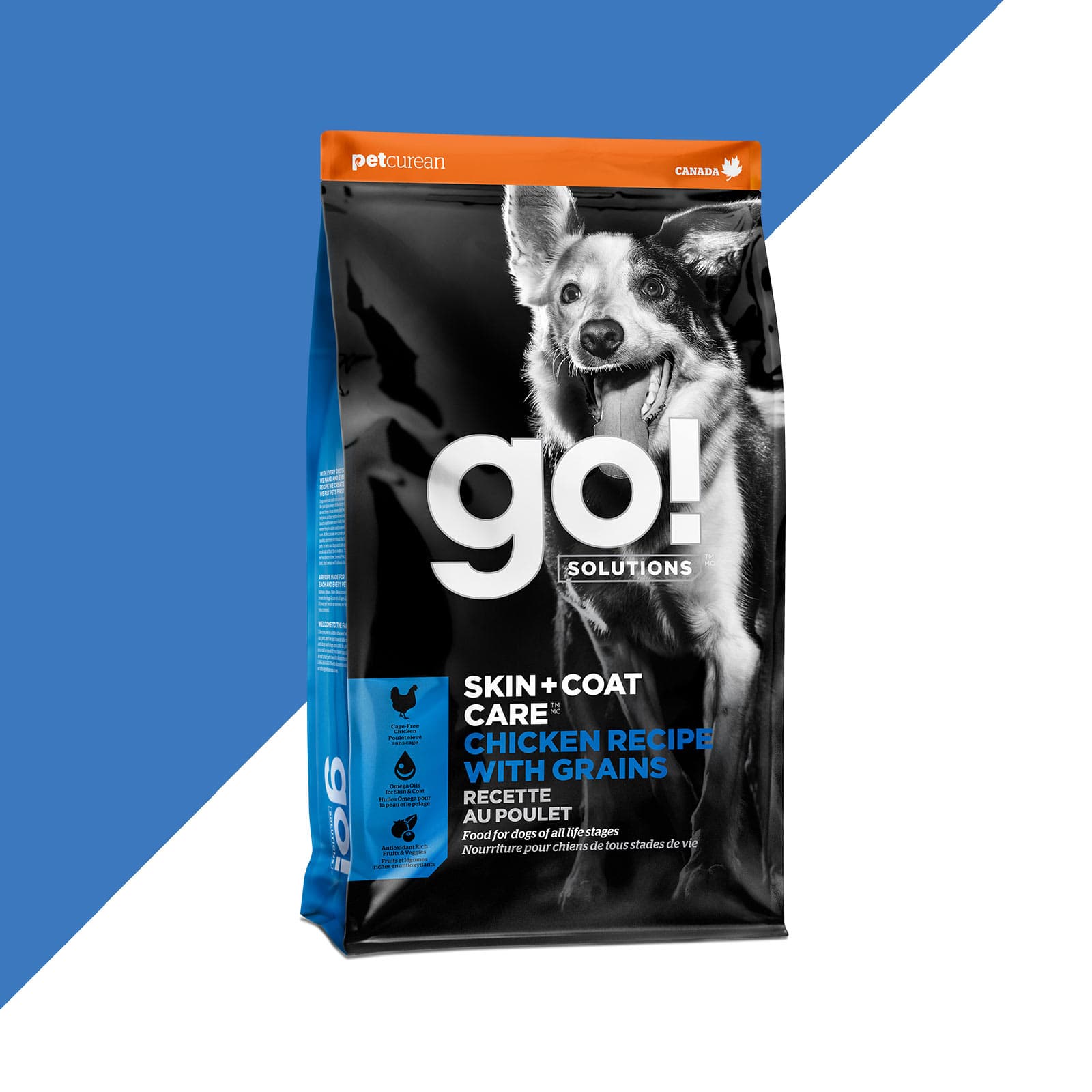Chicken skin can be good for dogs in moderation, but it should be served without seasoning or excess fat. In small quantities, it can provide a good source of protein and healthy fats for your furry friend.
However, always consult with your veterinarian before incorporating chicken skin into your dog’s diet to ensure it is suitable for their specific needs and health conditions. Remember to remove any bones and skin with excessive fat to prevent digestive issues or potential hazards.
Assessing Chicken Skin For Dogs
As pet owners, we are constantly looking for healthy and tasty treats to reward our furry friends. One such option that often comes to mind is chicken skin. But is chicken skin good for dogs? Let’s take a closer look at its nutritional components, compare it to other common dog treats, and assess its potential benefits and hazards.
Nutritional Components Of Chicken Skin
Chicken skin is primarily composed of fats and proteins, making it a calorie-dense treat. It contains essential nutrients that can contribute to your dog’s overall well-being. Let’s delve into the specific nutritional components of chicken skin:
Fats and proteins
Chicken skin is rich in both fats and proteins. While fats are often associated with negative connotations, they are a vital part of a balanced diet for dogs. The fats found in chicken skin provide a concentrated source of energy and help support various bodily functions. Proteins, on the other hand, are the building blocks of muscles and play a crucial role in maintaining your dog’s strength and vitality.
Vitamins and minerals content
Aside from fats and proteins, chicken skin also contains essential vitamins and minerals. These nutrients contribute to your dog’s overall health and support various bodily processes. Some key vitamins and minerals found in chicken skin include:
| Vitamins | Minerals |
|---|---|
| Vitamin A | Zinc |
| Vitamin E | Iron |
| Vitamin K | Selenium |
Comparison With Other Common Dog Treats
When it comes to choosing treats for your dog, it’s important to consider their nutritional value. Let’s compare chicken skin with some other common dog treats:
Benefits over processed dog snacks
Unlike many processed dog snacks that contain artificial additives and preservatives, chicken skin is a natural and unprocessed treat. It offers a higher nutritional value due to its protein and fat content, making it a healthier alternative to artificially flavored treats that may be lacking in essential nutrients.
Potential hazards compared to raw or vegetable treats
While chicken skin can be a nutritious treat option, it is crucial to be aware of the potential hazards it may present. Compared to raw or vegetable treats, there is a higher risk of chicken skin causing digestive issues in some dogs due to its fat content. It’s important to monitor your dog’s response to chicken skin and adjust portion sizes accordingly to avoid any adverse effects.
Chicken skin can be a tasty and nutritious treat for your furry companion. It provides essential fats, proteins, vitamins, and minerals that support your dog’s overall well-being. However, it’s essential to feed it in moderation and take into consideration your dog’s individual dietary needs and sensitivities. Always consult with your veterinarian before introducing any new treats into your dog’s diet.

Credit: go-solutions.com
Is Chicken Skin Safe For Canine Diets?
When it comes to feeding our furry friends, it’s important to be aware of what foods are safe and healthy for them. One question that often arises is whether chicken skin is safe for dogs to consume. In this article, we will address common myths and facts surrounding the topic, explore the impact on a dog’s digestive system, discuss the risk of pancreatitis and obesity, delve into appropriate portion sizes, and touch upon the differences between small and large breeds. So, let’s dig in and find out if chicken skin is a suitable treat for our beloved canines!
Addressing Common Myths And Facts
There are numerous myths and misconceptions regarding the safety of chicken skin for dogs. Let’s separate fact from fiction:
- Myth: Chicken skin is a high source of dietary fat that can lead to weight gain in dogs.
- Fact: While chicken skin does contain fat, it can also provide essential nutrients and fatty acids that are beneficial to a dog’s overall health.
- Myth: Chicken skin is harmful to a dog’s digestive system.
- Fact: In moderation and when prepared appropriately, chicken skin can be safely digested by dogs.
- Myth: Chicken skin causes pancreatitis in dogs.
- Fact: While too much fat can increase the risk of pancreatitis, occasional consumption of chicken skin is generally well-tolerated by healthy dogs.
Impact On A Dog’s Digestive System
The digestive system of dogs is designed to handle a variety of food types. When it comes to chicken skin, it is important to consider the cooking method and seasoning. Excessive seasoning or heavily fried chicken skin can lead to digestive upset. However, if the skin is prepared without excessive spices or seasonings and is properly cooked, it can be easily digested by dogs.
The Risk Of Pancreatitis And Obesity
It’s crucial to note that excessive consumption of chicken skin can contribute to the risk of pancreatitis, a condition characterized by inflammation of the pancreas. Pancreatitis can be painful and lead to serious health complications in dogs. Additionally, the high-fat content in chicken skin can contribute to obesity in dogs, which can further increase the risk of various health problems including diabetes and joint issues.
Appropriate Portion Sizes For Dogs
When feeding chicken skin to your dog, moderation is key. It is important to offer it as a treat or small addition to their regular diet rather than a meal replacement. A good guideline is to limit chicken skin treats to no more than 10% of a dog’s total daily caloric intake. Consult with your veterinarian to determine the appropriate portion size based on your dog’s specific needs and dietary requirements.
Small Breeds Versus Large Breeds
It is worth noting that small breeds tend to have a higher metabolic rate compared to larger breeds. Therefore, portion sizes should be adjusted accordingly. Small dogs may require smaller amounts of chicken skin as a treat due to their smaller size and higher energy expenditure. Consult with your veterinarian to ensure that you are providing the appropriate amount of chicken skin for your dog’s breed and size.
To summarize, while chicken skin can be a tasty and enjoyable treat for dogs, it should be given in moderation and prepared appropriately. Excessive consumption can lead to health risks such as pancreatitis and obesity. Remember to consult with your veterinarian to determine portion sizes suitable for your dog’s breed and individual needs. With the proper precautions, you can safely include chicken skin as an occasional treat in your dog’s diet!
Integrating Chicken Skin Into Dog Nutrition
When it comes to maintaining a healthy diet for our beloved furry friends, finding the right balance of nutrients is essential. Many dog owners wonder if chicken skin can be a beneficial addition to their canine’s nutrition. In this article, we delve into the topic of whether chicken skin is good for dogs and explore the best ways to integrate it into their diet effectively.
Balanced Meal Planning For Dogs
Including chicken skin in your dog’s diet should be done in a thoughtful and balanced manner. While chicken skin is a rich source of protein and healthy fats, it should be incorporated into their diet in moderation to avoid excessive calorie intake. Consider consulting your veterinarian for guidance on how much chicken skin is appropriate for your dog’s age, size, and activity level.
Role Of Treats In Daily Calorie Intake
Treats play an important role in a dog’s daily calorie intake. It is crucial to factor in the calorie content of chicken skin treats when planning your dog’s meals. As chicken skin can be calorie-dense, it’s essential to be mindful of the overall calorie consumption to prevent weight gain or potential health issues.
Incorporating Chicken Skin With Other Food Items
Integrating chicken skin into your dog’s nutrition can be done by combining it with other food items to create a well-rounded meal. Here are some creative ideas:
- Mix shredded chicken skin with lean protein sources like boiled chicken breast or fish to add flavor and texture.
- Toss small pieces of roasted chicken skin on top of your dog’s regular dry food to provide a tasty crunch.
- Combine cooked chicken skin with steamed vegetables or brown rice to create a wholesome and balanced meal.
Best Practices For Offering Chicken Skin
When offering chicken skin to your dog, it’s important to follow these best practices:
- Ensure the chicken skin is properly cooked and free from any seasoning or spices that may be harmful to dogs.
- Monitor your dog’s reaction to the addition of chicken skin in their diet, especially if it’s their first time trying it. Watch for any signs of digestive discomfort or allergies.
- Offer chicken skin as a treat or as part of a meal, taking into account the overall calorie intake.
Preparation Methods For Safety
When preparing chicken skin for your dog, follow these safety guidelines:
- Remove excess fat from the chicken skin to reduce the risk of pancreatitis.
- Bake or grill the chicken skin instead of frying it to minimize the amount of added oil in the preparation process.
- Allow the chicken skin to cool before offering it to your dog to prevent any burns.
Signs That Your Dog Should Avoid Chicken Skin
While chicken skin can be a healthy addition to many dogs’ diets, there are cases where it should be avoided. Pay attention to the following signs that may indicate your dog should not consume chicken skin:
- Allergic reactions, such as itching, rashes, or gastrointestinal upset.
- History of pancreatitis or other digestive issues.
- Weight management or obesity concerns.
Always prioritize your dog’s health and consult with your veterinarian if you have any doubts or concerns about incorporating chicken skin into their diet.
Frequently Asked Questions Of Is Chicken Skin Good For Dogs?
Can Dogs Eat Chicken Skin?
Yes, dogs can eat chicken skin in moderation. However, it’s important to remove excess fat and seasoning.
Is Chicken Skin Harmful To Dogs?
Chicken skin can be harmful to dogs if they consume too much at once. It may lead to pancreatitis or obesity.
Should Chicken Skin Be Cooked For Dogs?
Yes, chicken skin should be properly cooked to avoid any potential bacterial contamination.
What Are The Benefits Of Feeding Chicken Skin To Dogs?
Feeding chicken skin to dogs in moderation can provide them with essential fatty acids and added flavor to their diet.
Can Puppies Eat Chicken Skin?
It’s recommended to avoid feeding chicken skin to puppies, as their digestive systems are still developing.
How Much Chicken Skin Can Dogs Eat?
Dogs should eat chicken skin in moderation. The portion size depends on their size, weight, and overall health.
Are There Any Risks Associated With Feeding Chicken Skin To Dogs?
Feeding chicken skin to dogs can carry the risk of obesity, pancreatitis, and gastrointestinal upset if consumed excessively.
Conclusion
To wrap up, it’s essential to consider the potential pros and cons of feeding chicken skin to your furry friend. While chicken skin can be a tasty treat for dogs, it’s crucial to moderate their intake due to its high-fat content.
Too much chicken skin can lead to weight gain and digestive issues. Always consult with your veterinarian to ensure your dog’s diet is balanced and appropriate for their individual needs.
Last Updated on April 23, 2025 by Pauline G. Carter

